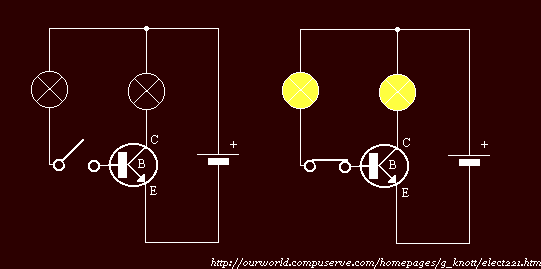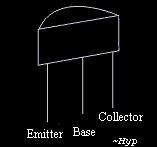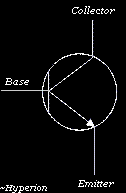 |
Physics 319 |  |
|
Data Sheet (Fairchild PDF) The NPN tells us that this transistor consists of two N-Type layers and one P-Type Layer. The Pins, looking at the transistor from the flat side, moving from left to right are Emitter, Base, and Collector.
In a NPN transistor, current passes from the Collector pins, to the Emitter pins through the Base layer (in this case the P-Type layer). A change in the amount of current provided to the base pin modifies the current that passes from the Collector to the Emitter. Transistors have a gain, this means that transistors are current amplifiers. A small current can be provided the Base, while a much larger current can be drawn from the Emitter. Here the transistor is being used as a switch. This is an attractive alternative to mechanical switching if the required currents are low. Transistors make extremely fast switches.  Transistors have a maximum allowable current and voltage before they breakdown, exceeding this limitation causes the Collector/Emitter pins to conduct freely. If this occurs the transistor tends to melt rather quickly. The maximum current rating for this particular transistor is 0.20A. |

